Karner blue butterfly (Lycaeides melissa samuelis)Federal Status: Endangered Host plant: Wild lupine (Lupinus perennis) Historical Range: Illinois, Indiana, Massachusetts, Michigan, Minnesota, New Hampshire, New York, Ohio, Pennsylvania, Wisconsin. History and Description: The Karner blue butterfly was first described more than a century ago in Karner, New York. It is a small butterfly, with a wingspan of about one inch. The male's wings are distinctively marked with a silvery or dark blue color. The female is grayish brown, especially on the outer portions of the wings, to blue on the topside, with irregular bands of orange crescents inside the narrow black border. (ECOS- Environmental Conservation Online System) While adult Karner blues feed on a variety of plants, wild lupine is the only known food plant for their larvae. Without wild lupine the cycle of life for this butterfly would be broken. Lupines are adapted to particular environmental conditions. The plants required by the larvae of the Karner blue, are found in savanna, barrens, and dune habitats which were once quite extensive. However, like many other places the habitats of the Karner blue have been subject to extensive development with a resulting decline in the butterfly. (USFWS Podcast Dave Harrelson) Callippe silverspot butterfly (Speyeria callippe callippe)Federal Status: Endangered Host plant: Johnny-jump- up (Viola pedunculata) Historical Range: California History: "The callippe silverspot was historically found around the eastern, southern, and western sides of San Francisco Bay, but is now limited to just seven sites. It is found in native grassland and adjacent habitats, where females lay their eggs on the larval food plant, Johnny-jump-up. The causes of the callippe silverspot’s decline are fairly clear: The vast majority of potential butterfly habitat lies under the cities of San Francisco, Oakland, and Berkeley, and what open areas remain within this butterfly’s range are dominated by introduced plant species. Many of these areas are also grazed by cattle, mined, or subject to heavy recreational use." (Xerxes Society) Bartram's hairstreak butterfly (Strymon acis bartrami)Federal Status: Endangered Host plant: Pineland croton (Croton linearis) Range: Florida History: The Bartram's Hairstreak is a small butterfly approximately 1 inch (in) (25 millimeters (mm)) in length with a forewing length of 0.4 to 0.5 in (10 to 12.5 mm) and has an appearance characteristic of the genus. Despite its rapid flight, this hairstreak is easily observed if present at any density as it alights often, and the brilliance of its grey underside marked with bold white postdiscal lines beneath both wings provides an instant flash of color against the foliage of its hostplant, pineland croton (Croton linearis). (ECOS- USFWS) Saint Francis' Satyr (Neonympha mitchellii francisci)Federal Status: Endangered Host plant(s): Grasses, sedges, and rushes and are usually located in wet meadows Range: North Carolina. History: "The Saint Francis’ satyr occurs in the sandhills of Cumberland and Hoke counties, North Carolina, (a single metapopulation) and has a single record in Virginia. Soon after its discovery in the 1980s, it was believed that this butterfly had been collected to extinction, but happily it was rediscovered in 1992. Its habitat is wet meadows, previously likely created by fire or beaver activity, although now mainly maintained by human activity. Despite its protected status, it is still in demand by collectors". (Xerxes Society) San Bruno elfin butterfly (Callophrys mossii bayensis)Federal Status: Endangered Host Plant: Sedum spathulifolium. Montara Mountain colonies are suspected to use Montara manzanita (Arctostaphylos montaraensis) and California huckleberry (Vaccinium ovatum). (Xerxes Society) Range: California. History: Its habitat has been diminished by quarrying, off- road recreation, and urban development. Development pressures on the San Francisco peninsula continue to grow, and the major threats to the butterfly— increased urbanization in the area, and loss of habitat by road construction and rock and sand quarrying—reflect this. Grazing may have encouraged the growth of exotic plants in the area. In the early 1980s, a habitat conservation plan was developed to allow development on San Bruno Mountain while minimizing the adverse effects on the San Bruno elfin butterfly and other rare species in the area. This plan is currently being amended, which may result in further urban development. (Xerxes Society) Miami Blue (Cyclargus thomasi bethunebakeri)Status: Endangered Host plant: Range: Florida Keyes History: This butterfly is one of the most endangered insects in the world. After Hurricane Andrew in 1992, there were no sightings of this species again until 1999 in Bahia Honda State Park. All known individuals were thought to be gone as of 2010. This leaves only a few scattered individuals in another population in the Marquesas Keys in Key West National Wildlife Refuge. (ECOS- USFWS) Schaus swallowtail (Heraclides aristodemus ponceanus)Status: Endangered Host plant(s): Torchwood and Wild lime Range: Florida. History: Listed on April 28th, 1976 as threatened, the Schaus swallowtail was the first butterfly to be protected under the Endangered Species Act, or ESA as the law is often referred to. This butterfly was originally described by William Schaus in 1911 from specimens collected in the south Miami area in 1898. The butterfly was originally distributed in southern Florida’s tropical hardwood hammocks from south Miami to Lower Matacumbe Key. Hardwood hammocks are a type of forest that is on ground that is slightly elevated above the surrounding landscape. These forests are essential for the survival of the butterfly. The ongoing loss of habitat and food plants was pushing the Schaus swallowtail even farther toward the brink of extinction. This resulted in the Fish and Wildlife Service reclassifying the butterfly to the more imperiled status of endangered in 1984. (Xerxes Society) Palos verdes blue butterfly (Glaucopsyche lygdamus palosverdesensis)Federal Status: Endangered Host Plant(s): Milkvetch and deerweed Range: Palos Verdes Peninsula (Los Angeles County), California History: The Palos Verdes Blue butterfly was listed as endangered in 1980 and was feared extinct until it was rediscovered in 1994. This butterfly's habitat is under constant threat of development. The population is also threatened by weed control, off-road vehicle use, non-native invasive plants, and fire suppression. Conservation initiatives include control of human use of the habitat, replanting of the host species, and a captive breeding program. (Xerxes society) Florida leafwing butterfly (Anaea troglodyta floridalis)Federal Status: Endangered Range: Florida Host plant: Pineland Croton Description and History: The Florida leafwing is a medium-sized butterfly approximately 2.75 to 3 inches (in) (76 to 78 millimeters (mm)) in length. The upper-wing (or open wing) surface color is red to red-brown, the underside (closed wings) is gray to tan, with a tapered outline, cryptically looking like a dead leaf when the butterfly is at rest. The Florida leafwing exhibits sexual dimorphism, with females being slightly larger and with darker coloring along the wing margins than the males. The Florida leafwing occurs only within pine rocklands that retain its hostplant, pineland croton. Uncompahgre fritillary butterfly (Boloria acrocnema)Federal Status: Endangered Host plant: Snow willows (Salix nivalis) Historical range: Colorado. Description and History: The Uncompahgre fritillary is a small butterfly with a 2-3 cm (1 inch) wingspan. Males have rusty brown wings criss-crossed with black bars; females’ wings are somewhat lighter. Underneath, the forewing is light ocher and the hindwing has a bold, white jagged bar dividing the crimson brown inner half from the purple-grey scaling on the outer wing surface. The body has a rusty brown thorax and a brownish black abdomen. The Uncompahgre fritillary butterfly was discovered on Uncompahgre Peak, Hinsdale County, Colorado on July 30, 1978. It was subsequently described as a new species. (ECOS- USFWS) ReferencesXerxes Red List of Butterflies and Moths: https://xerces.org/red-list-of-butterflies-and-moths/
U.S. Fish and Wildlife Service. ECOS Environmental Conservation Online System https://ecos.fws.gov/ecp0/reports/ad-hoc-species-report?kingdom=V&kingdom=I&status=E&status=T&status=EmE&status=EmT&status=EXPE&status=EXPN&status=SAE&status=SAT&fcrithab=on&fstatus=on&fspecrule=on&finvpop=on&fgroup=on&header=Listed+Animals Butterflies and Moths of North America. https://www.butterfliesandmoths.org/search/google/ Endangered Butterflies and Plants - USFS Podcast with Dave Harrelson https://www.fws.gov/pollinators/audio/EndangeredPollinators_Dave.mp3
75 Comments
So, what is a seed ball?A seed bomb is a quarter sized ball made of clay, compost and seeds which is used to casually plant milkweed and other native plants. They are often used in guerrilla gardening. How do seed balls work?Reseeding areas by the traditional method of broadcasting seeds poses several problems but seed bombs can remedy all those issues. For instance,
All of this adds up to increased germination rates and a self-sustaining system! STEP 1: Gather Your IngredientsSTEP 2: Mix Compost, Clay and Water together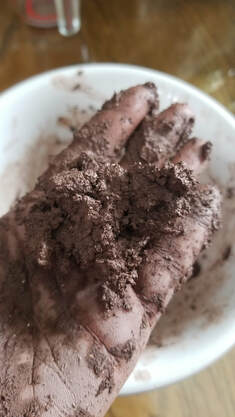 Start with 1 cup of compost and 1 cup of clay. Mix together in a bowl and add about 1/2 cup of water. The consistency should be just sticky enough to adhere the compost and clay together. You can add more or less water/soil to get this consistency. Pro Tip: For me, 1 cup of both made 15 quarter-sized seed bombs. You can use this recipe to multiply it to make your desired amount of seed balls. Step 3: Roll into ballsJust like making cookies! Grab enough clay mixture to make about a 1 inch in diameter ball. Step 4: Add Seeds
Step 5: Reshape into a ball and allow to dry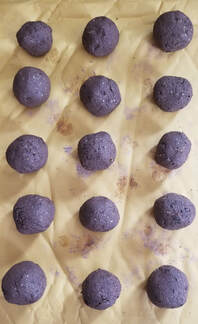 Once you’ve added the seeds, roll the seed bombs in your hand to make sure seeds are tucked in nicely. Lay seed bombs out on a newspaper or cardboard box and allow to dry for 24-48 hours or until hard. Avoid drying them on plastic to avoid mold. After drying, you can also store the seed bombs in an airtight container in a cool, dry place until it’s time to plant. Mason jars or glass Tupperware work well for this! How to plant your milkweed seed ballsWhen: You can plant them now while there is still snow on the ground so that the milkweed balls will still cold-stratify before Spring arrives.
Pre-stratified seeds, can be planted in the Spring after the first frost has passed. You can also plant in the Fall once there have been a few frosts and there is no chance the seeds will germinate before Spring. How: Simply throw the seed bombs onto bare soil. With a little water, plenty of sunlight and compost, your seed bombs will germinate and become a beautiful haven for Monarch butterflies! We all know that monarch caterpillars eat milkweed plants, but what about the other insects that share a food source with Monarchs? Red Milkweed Beetle (Tetraopes tetrophthalmus)Native range: Their range matches the distribution of Common Milkweed (Asclepias syriaca), basically the Northeast quadrant of North America Harmful to Monarch caterpillars/eggs? No. They are herbivores and only eat milkweed. They are harmless to monarch larvae and eggs so you can leave them on your milkweed plant if you have enough to go around. Identification: Red/orange in color with oval spots all over body and un-ringed antennae. Life Cycle: Eggs laid on stems near ground or just below surface; larvae bore into stems, overwinter in roots, and pupate in spring; adults emerge in early summer Small Milkweed Bug (Lygaeus kalmii)Native range: Throughout US and Southern Canada Harmful to Monarch caterpillars/eggs? Usually not. They are mostly herbaceous and will suck nectar from flowers and sometimes feed on milkweed seeds. However, they have been reported to be predators, especially in spring when milkweed seeds are scarce. They have been reported feeding on honey bees, monarch caterpillars and pupae, and dogbane beetles, among others (Root 1986). If you feel like you MUST remove them from your plant, the best method to is to place them into a bucket of soapy water, NOT use pesticides that will harm other beneficial insects. Identification They adult is black with a broad orange/red band on forewing, forming an "X" shape. Their head is black with a dull red spot on top. In eastern specimens, forewings are all black, but in western specimens they have large white spots. (Bugguide.net) Life cycle Eggs are laid on milkweed in spring. One or more generations per year. Adults overwinter. Large Milkweed Bug (Oncopeltus fasciatus)Native range: Throughout North America and from Central America through Mexico and the Caribbean to southern areas in Canada. Harmful to Monarch caterpillars/eggs? No, they do not feed on Monarch larvae or eggs so they are harmless and play a role in the ecosystem. However, they do feed on the seeds, leaves and stems of milkweeds (Asclepias). Damage to the plants can deplete resources for Monarch caterpillars. Planting more milkweed will ensure that they both have enough to eat. Identification: Adults are overall black and orange- with black band in the middle and two large black spots in front and back. Nymphs are bright orange and develop black spots late. Life Cycle: Eggs are laid in milkweed seed pods or in crevices between pods. About 30 eggs are laid a day, and about 2,000 over a female's lifespan, which lasts about a month during the summer. One or more generations per year. They can't survive cold winters, so they migrate south in the fall. They overwinter in the southern Atlantic and Gulf coast states where they feed and breed and gradually migrate north again in the spring and summer. (bugguide.net) Swamp Milkweed Leaf Beetle (Labidomera clivicollis)Native range: Widespread in North America east of the Rocky Mountains, south to northern Mexico (Riley et al. 2003) Harmful to Monarch caterpillars/eggs? Technically, no, because they are herbaceous. They do feed on milkweeds, especially Swamp Milkweed (Asclepias incarnata), but also Common Milkweed (A. syriaca) so just plant more so there is enough to go around! Life Cycle: They often overwinter as adults among leaves such as mullein (Verbascum). Adults mate on or around milkweed. Eggs are cemented to the underside of leaves. Larvae feed on leaves, and drop to ground to pupate (National Audubon Society Field Guide to Insects and Spiders) Note: Unlike the Monarch, larvae and adults of the milkweed leaf beetle are not thought to sequester cardiac glycosides from their milkweed host. Milkweed Tussock Moth Caterpillar (Euchaetes egle)Distribution: From southern Canada and south through Texas and Florida in North America Harmful to Monarch caterpillars/eggs? No, they are herbivores and only eat Milkweed. But they can defoliate an entire stand of Milkweed in a matter of days. Again, plant more milkweed! If you must: Handle milkweed tussock moth caterpillars with gloved hands as the caterpillars have urticating hairs that can result in an uncomfortable rash. Identification: Early instars appear slightly hairy and gray. Later instars sport tufts of black, white, and orange (sometimes yellow) setae (hairs). The head capsule is black. Larvae grow as long as 35 mm. Life Cycle: There is one generation per year in the north and two or more in the south. Mature caterpillars occur from June onwards. Monarch (Danaus plexippus)And finally! Our beloved Monarch caterpillars. We want to plant enough milkweed for the survival of these creatures while still respecting the natural order and ecosystems in nature. Please do not ever use pesticides on milkweed because you will not only harm the "pests" but also our beloved Monarchs which are in decline. Large Milkweed Bug Profile https://bugguide.net/node/view/504 Missouri Botanical Garden http://www.missouribotanicalgarden.org/gardens-gardening/your-garden/help-for-the-home-gardener/advice-tips-resources/pests-and-problems/insects/plant-bugs/milkweed-bugs.aspx Milne, Lorus and Margery. National Audubon Society Field Guide to Insects and Spiders Knopf, 1980. Red Milkweed Beetle Profile https://bugguide.net/node/view/2966 Small Milkweed Bug Profile https://bugguide.net/node/view/460#range Resources1. The surface of a Monarch's wing is covered with thousands of tiny, colorful scales. Loss of these scales is what causes Monarchs to lose their color!Have you seen a tattered and faded Monarch? After flying for a long period of time, these scales will fall off and the Monarch's wings will appear faded or even clear. You can generally tell the age of a Monarch this way! The tiny scales on the wings of Monarchs have been studied by biologists and aerospace engineers alike to better understand how they affect flight. (Source) 2. The Monarch caterpillar is a voracious eater and they can gain about 2700 times their original weight!Monarchs must consume A LOT of food in a short amount of time in order to have enough food stored to go through metamorphosis. Monarchs literally outgrow their skin FIVE times. These sheds or molts are called "instars". Once the caterpillar has reached their fifth instar, they will find a place to pupate. 3. Two black spots on the inside surface of their hind wings distinguish male Monarch butterflies from the females.It is helpful to know how to identify a male from a female Monarch when gardening to attract butterflies. If you notice a female on a milkweed plant, they are most likely laying their eggs there. You can then bring those leaves inside to raise your own Monarchs! Male and female Monarch butterflies are easily distinguishable. The females generally have thicker veins on their wings and they do not have black spots on their hind wings (which are actually specialized scales). In the case of most butterflies, these scales release hormones to attract females but they aren't sure that this is the case with Monarchs as well. It can be a little more difficult to tell the Monarch's sex when their wings are closed but if you look VERY closely you can still see the black dot that indicates a male even when the wings are closed. 4. Monarch and Viceroy butterflies utilize Müllerian mimicry in order to mutually co-mimic each other and warn predators of their toxicity.
It was long believed that the Viceroy used Batesian mimicry- “mimicry in which an edible animal is protected by its resemblance to a noxious one that is avoided by predators.” However, it was found that the Viceroy feeds on Willow species (cottonwood, willow, poplar trees) which contain salicylic acid, the active ingredient in aspirin and make them taste bitter to birds and other prey. 5. One female Monarch butterfly can lay an average of 300 and 500 eggs in the wild. Captive monarch butterflies average about 700 eggs per female over 2 to 5 weeks of egg laying, with a record of 1179 eggs in captivity!According to a study done by Karen Oberhauser (1997), the average amount of eggs laid in 1994 was 715 (range 290–1179). It is difficult to know exactly how many eggs Monarch butterflies lay during their lives in the wild, but the average is estimated to be between 300 and 500. Monarch females usually lay a single egg on a milkweed plant, often on the bottom of a leaf near the top of the plant. Eggs are only about the size of a pencil tip and are off-white or yellow, characterized by longitudinal ridges that run from the tip to the base. The eggs hatch about four days after they are laid (University of Minnesota, Monarch Lab). 6. Monarchs that emerge in the warmer months will become sexually mature within 5 days. However, migrating monarchs will emerge in reproductive diapause (suspension of reproductive development) and will not reproduce until Spring.Environmental factors play a role in triggering this physiological response. These factors include day length, temperature, and host plant quality (University of Minnesota, Monarch Lab). Monarchs that overwinter in Florida and California, however, may not emerge in reproductive diapause because they do not migrate to Mexico. Migrating monarchs emerging in cooler temperatures will pause their reproductive duties until they return to warmer, more favorable conditions. 7. The Monarch's studded gold chrysalises are created by the coupling of a carotenoid pigment and a hill-like structure that reflects light from the peaks. They get the carotenoids from their diet of milkweed.Monarch chrysalises shimmer in the sunlight like golden studded enclosures. In fact, word ¨chrysalis¨is derived from the Greek word ¨chrysos¨ meaning ¨gold.¨ What is the purpose of this beautiful feat of nature? Fred Urquhart was the first to study the gold spots on Monarchs in the 1970s. Interestingly enough, all danaine butterflies (monarchs and their relatives) have metallic spots on their chrysalises but how do they do this? In monarch butterflies and a few others the gold is created by a coupling of a carotenoid pigment and a hill-like structure that reflects light from the peaks. They get the carotenoids from their diet of milkweed. If the caterpillars are fed an artificial diet lacking carotenoids then the would-be golden crown develops as silver in the chrysalis. Here are some hypotheses for the reasons that Monarchs have metallic-looking spots on their pupae:
8. Monarch butterflies smell and taste with their antennae and legs which are covered with sensory cells called chemoreceptors. These chemoreceptors help Monarchs find milkweed to lay their eggs on.Like Monarchs, when we smell and taste we are actually sensing chemicals in our environment. We also have chemoreceptors, which are concentrated on our tongue as tastebuds and in our nose. Monarchs use sensing chemicals in order to find their host plant, milkweed, quickly and accurately. Dr. Bill Calvert describes what he observes in the field: "The female flits over the field and, when she stops on a plant, she drums the surface with her forelegs." She is basically putting tiny cuts into the plant in order for the chemicals to be released and for her to tell if it is indeed milkweed. "Monarchs use a combination of visual and chemical cues to find milkweed," says monarch scientist Dr. Karen Oberhauser. "Once they land on a plant, they use sensory organs on their feet and heads to tell them if it is a milkweed, and probably the quality of the milkweed." (Journey North) 9. An overwintering Monarch typically lives 7-8 months compared to other generations that only live 2-6 weeks.During the summer breeding season, monarchs live for only 2-6 weeks. But the monarchs that migrate to Mexico in the fall are different: They are born in late summer, stay alive all winter, and migrate north the following spring. 10. Milkweed contains toxins called cardiac glycosides and Monarch caterpillars will ingest and store these toxins to make themselves toxic to predators such as birds. The bright colors on a monarch caterpillar serve as a warning sign to predators that they may be poisonous. The toxic effect on vertebrates depends on the level of intake and most birds will throw up these toxins but will learn not to eat them again. ReferencesJourney North. How Do Monarchs Find Milkweed?
https://journeynorth.org/tm/monarch/sl/30/text.html Oberhauser, KS. 1997. Fecundity, lifespan and egg mass in butterflies: effects of male-derived nutrients and female size. Functional Ecology 11: 166-175 https://besjournals.onlinelibrary.wiley.com/doi/pdf/10.1046/j.1365-2435.1997.00074.x Rothschild M, Gardnier B, Mummery R. 1978. The role of carotenoids in the “golden glance” of danaid pupae (Insecta: Lepidoptera). Journal of Zoology 186: 351-358. University of Minnesota Monarch Lab https://monarchlab.org/biology-and-research/ask-the-expert/faq/ |
AuthorRebecca Chandler Archives
March 2024
Categories |

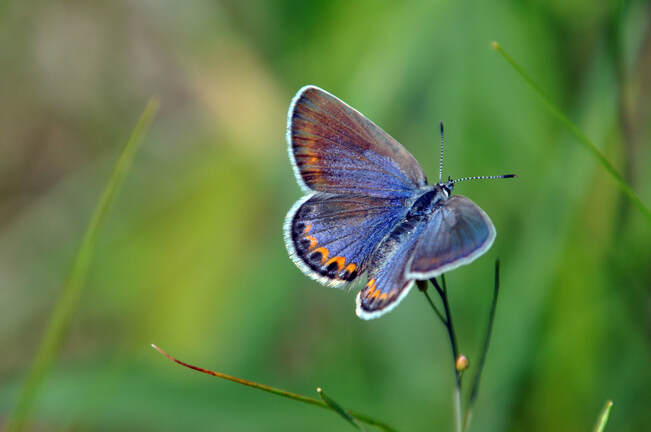
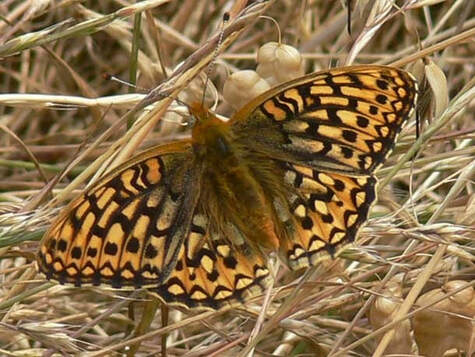
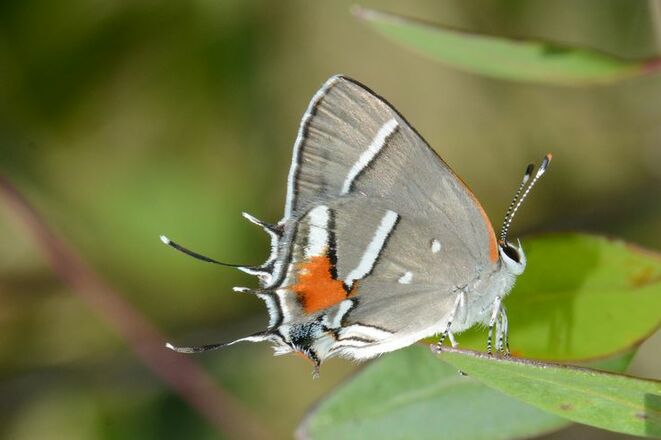
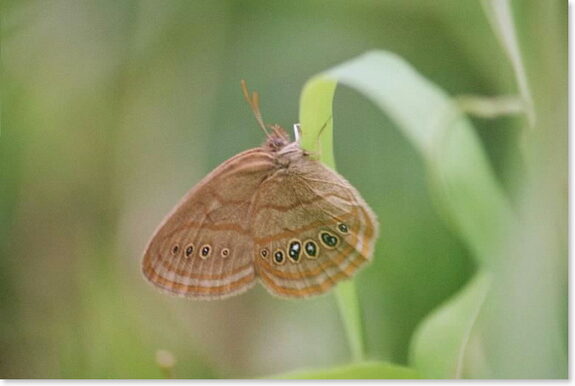
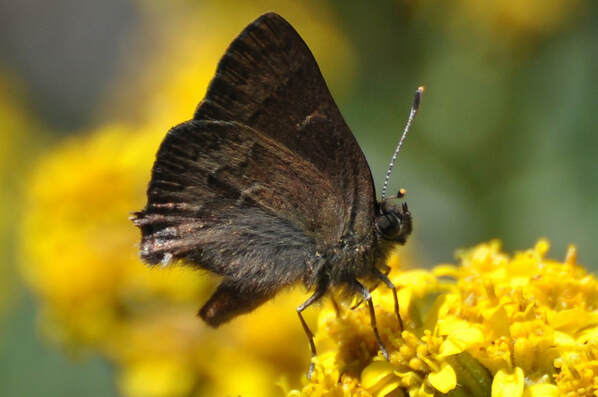
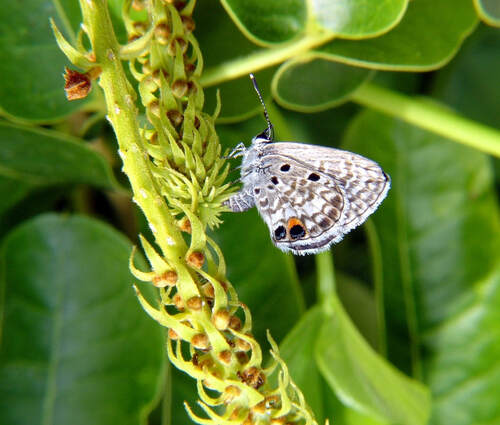
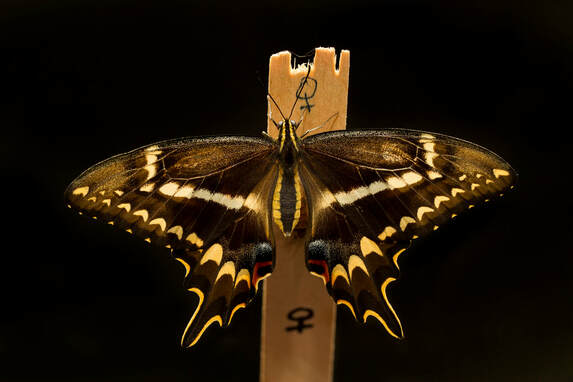
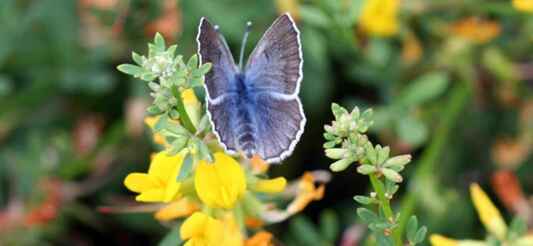
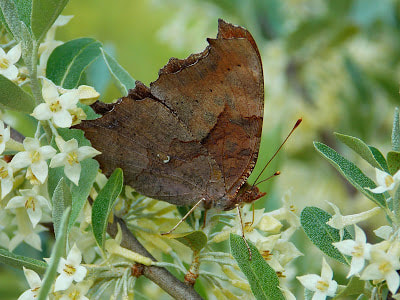
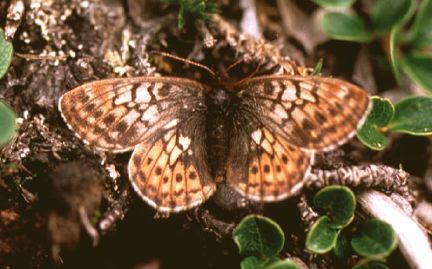
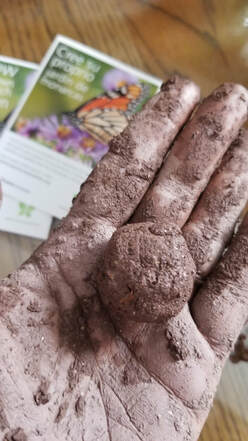
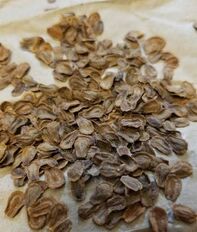
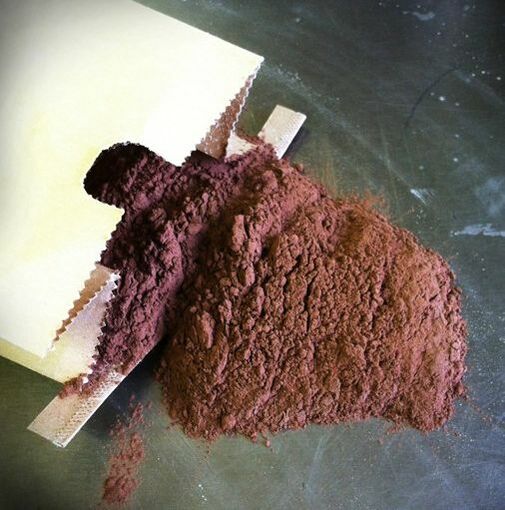

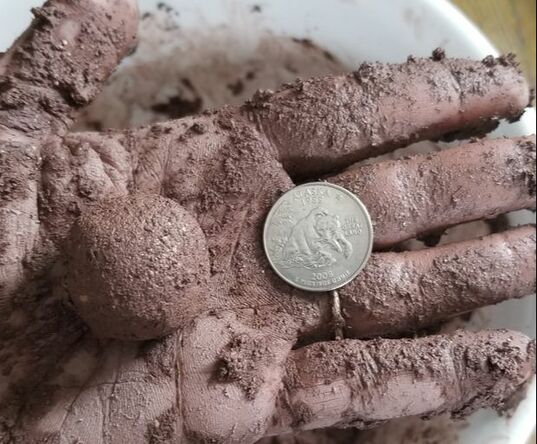
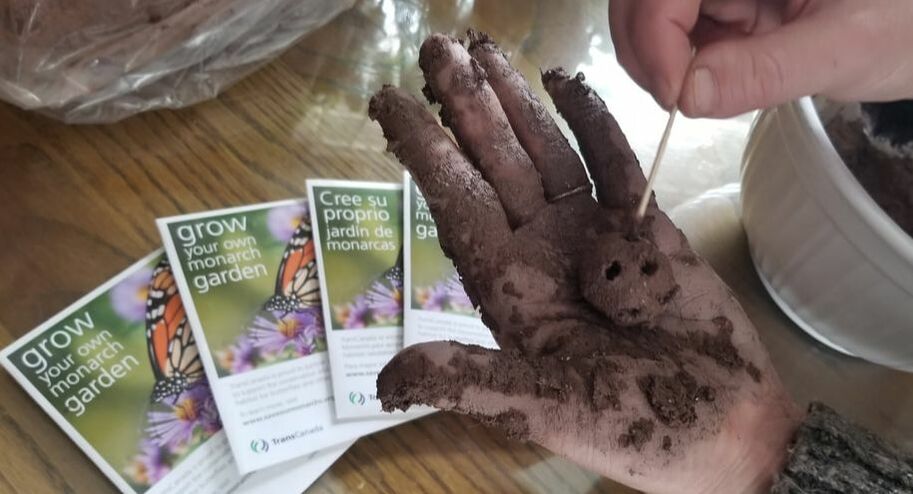
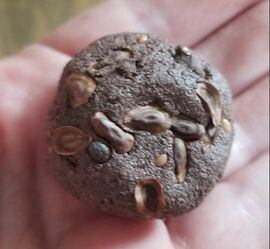
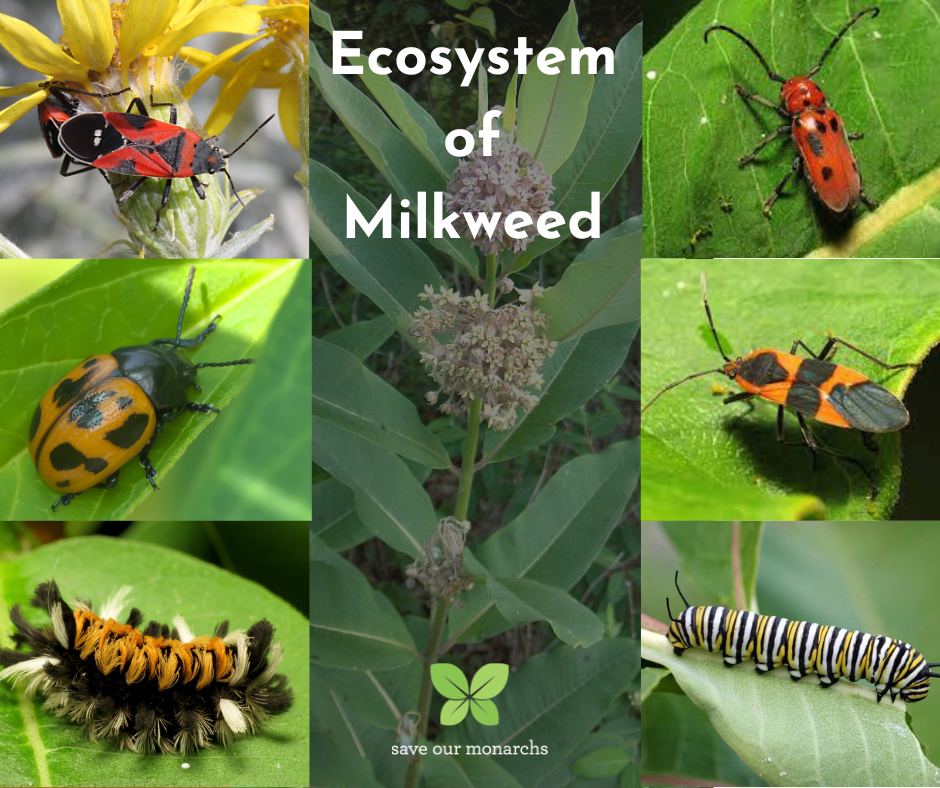
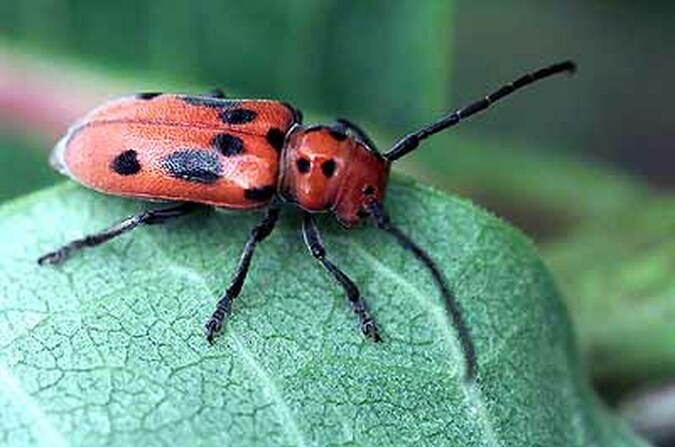
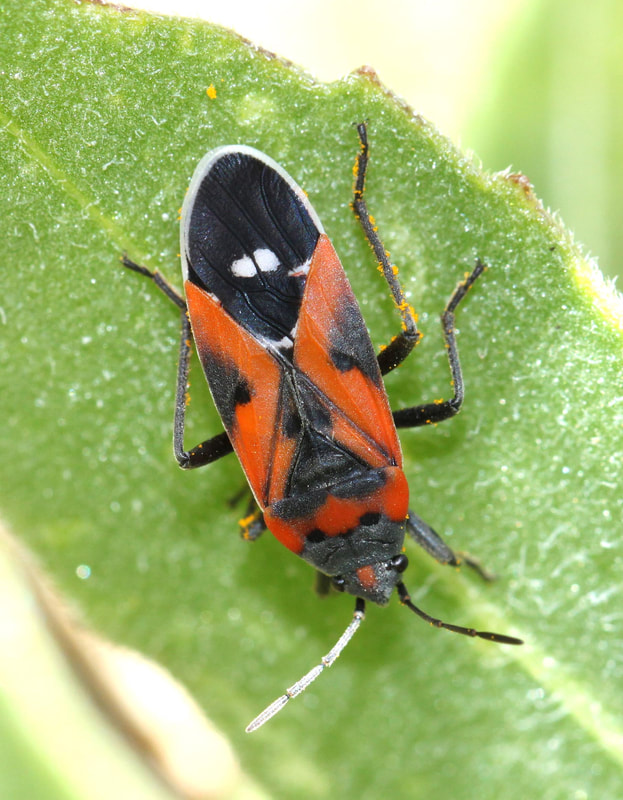
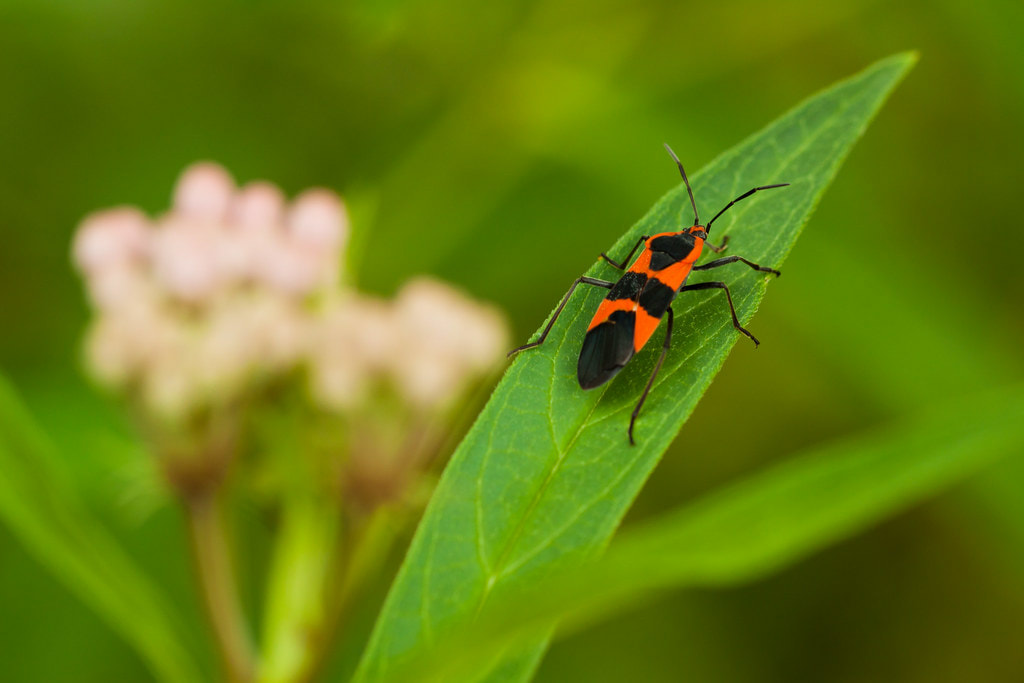
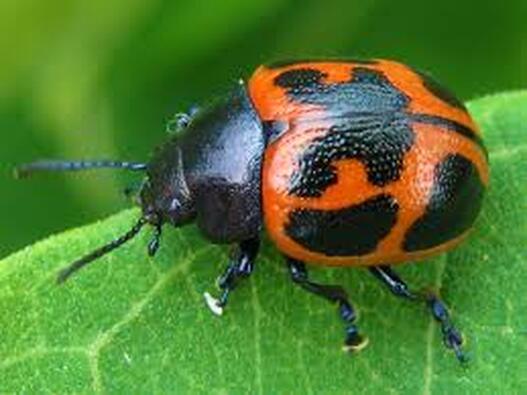
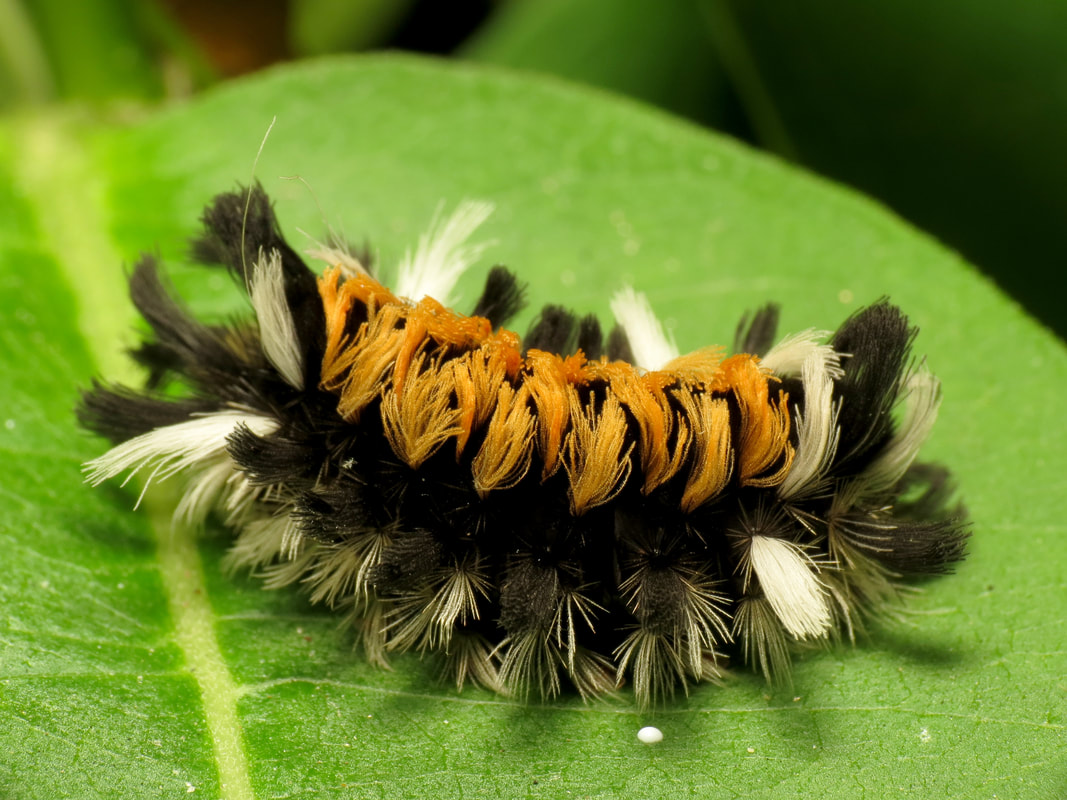
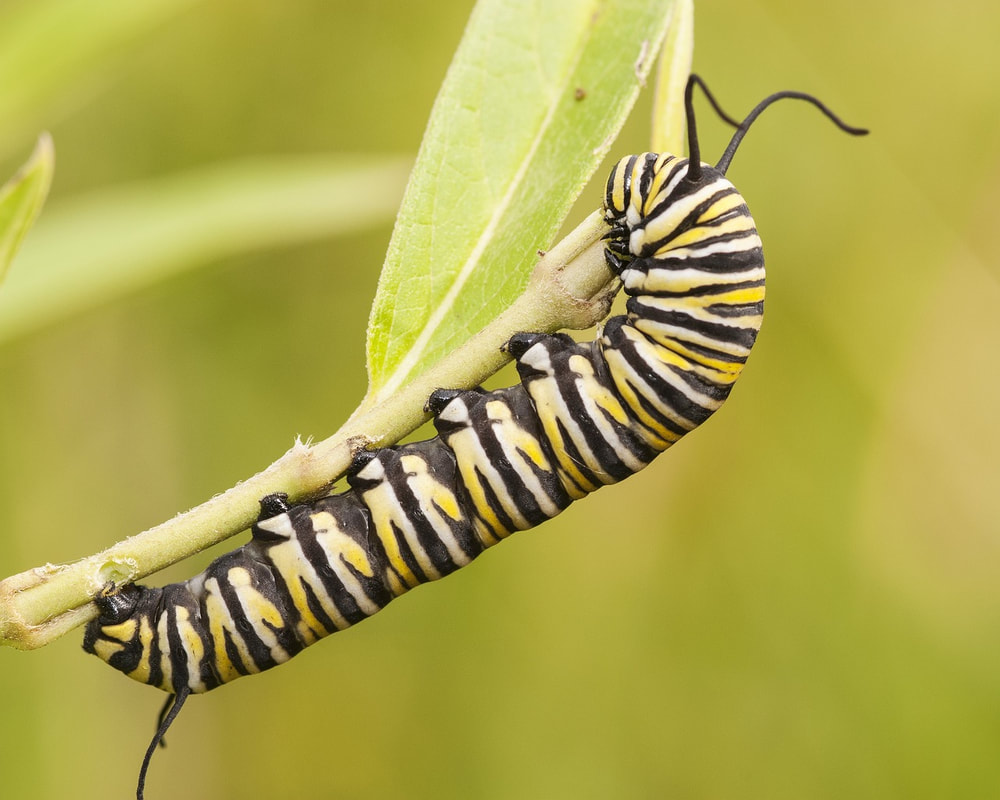
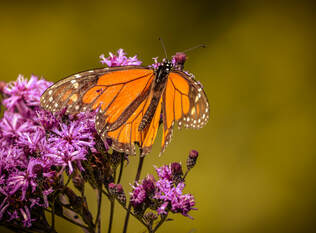
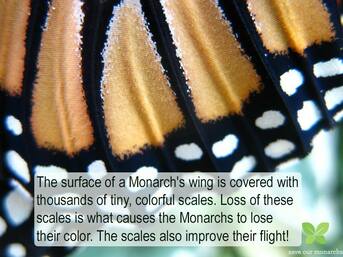
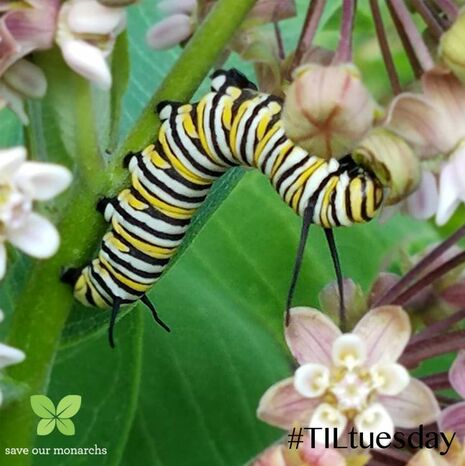
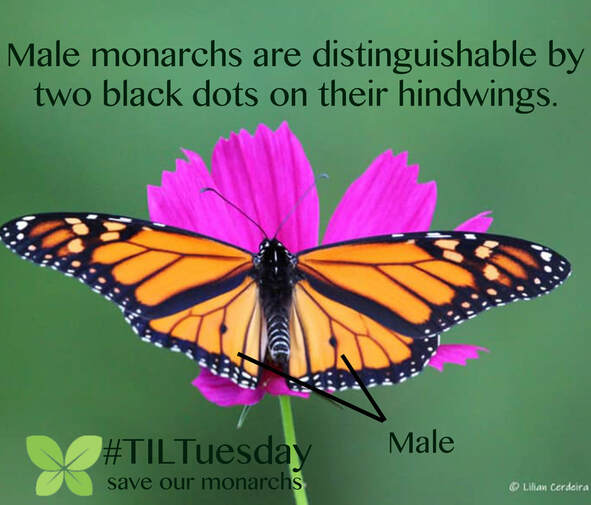
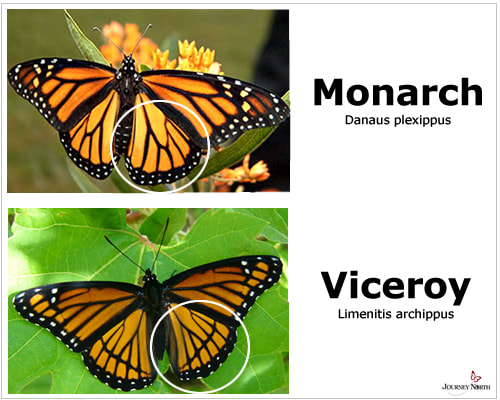
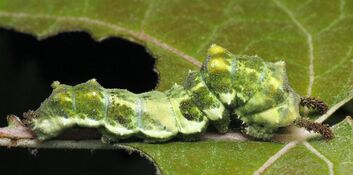
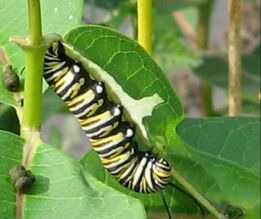
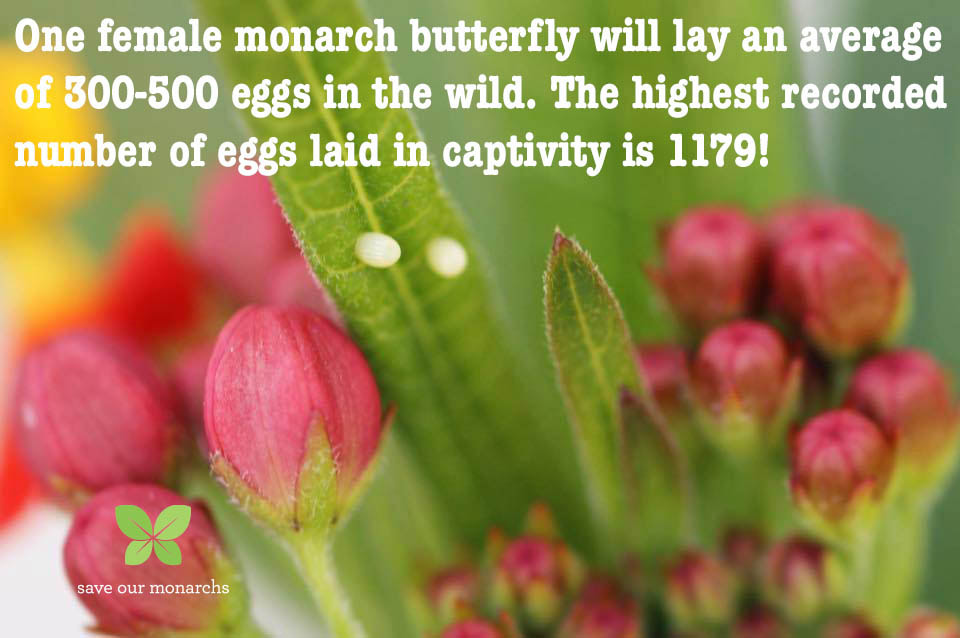
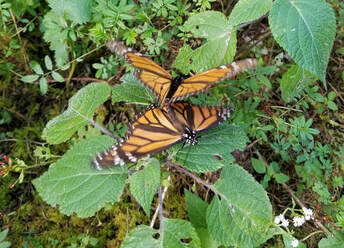
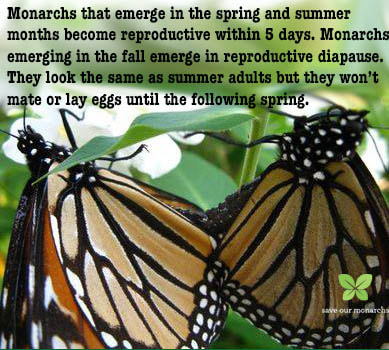
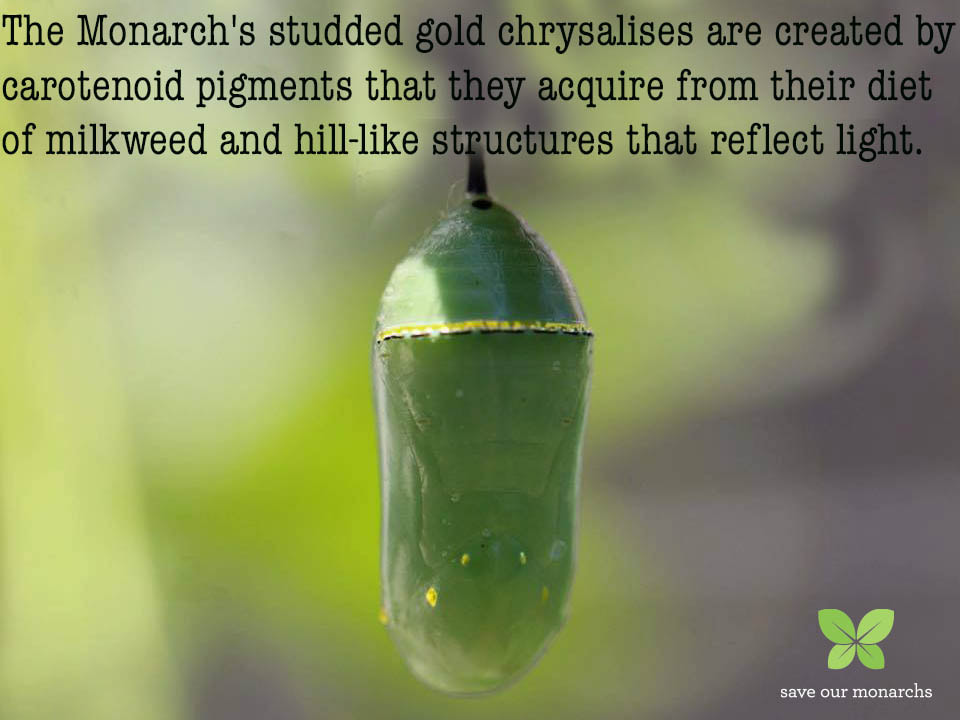
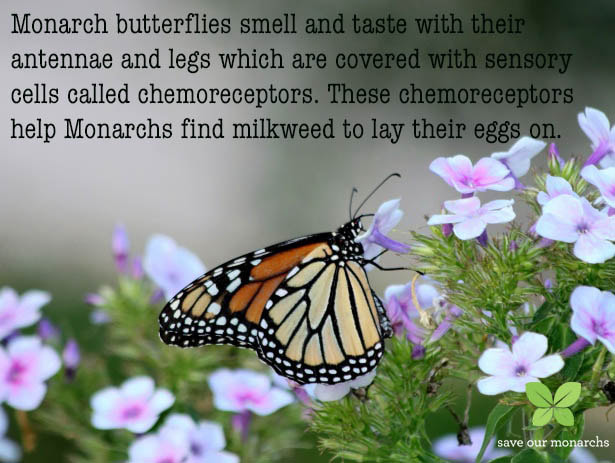

 RSS Feed
RSS Feed